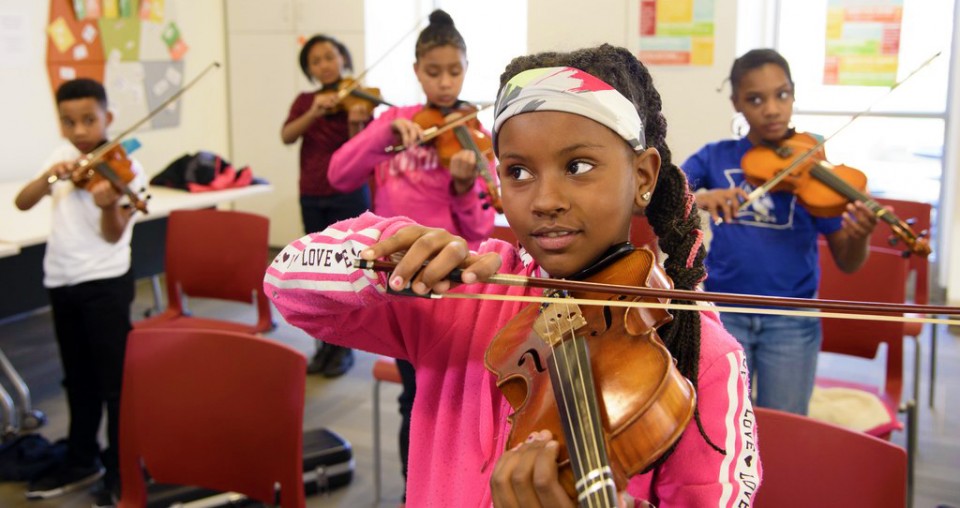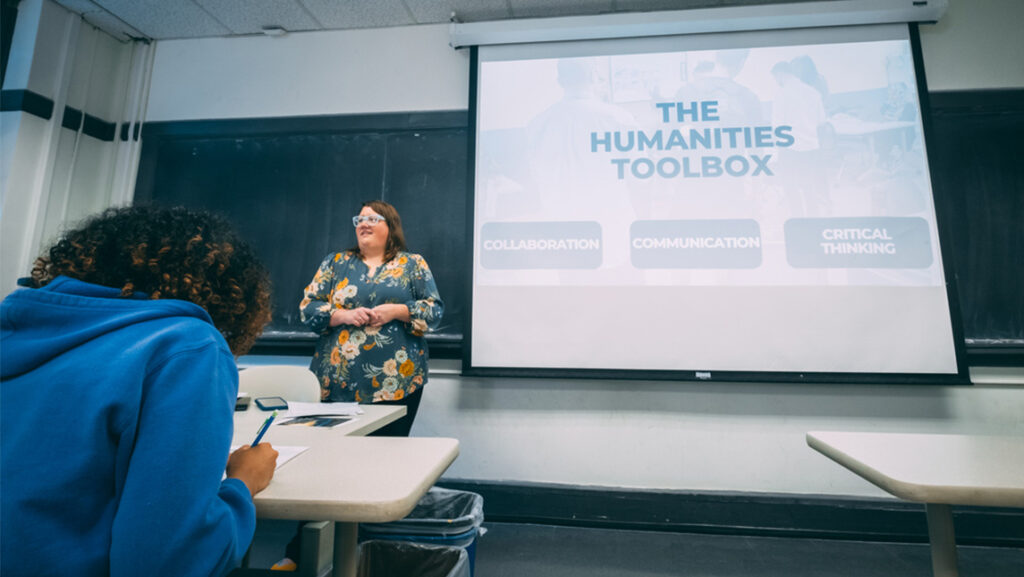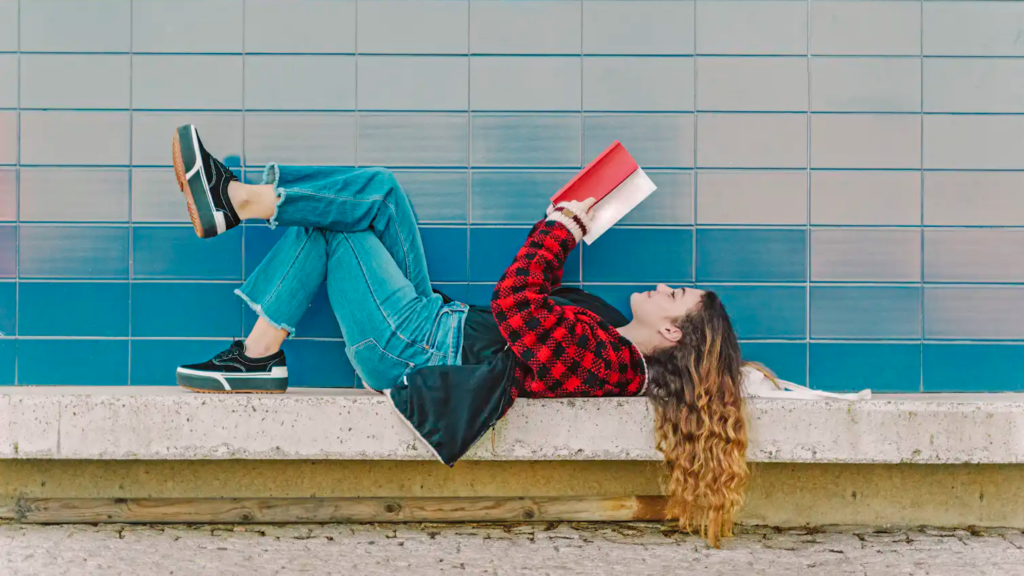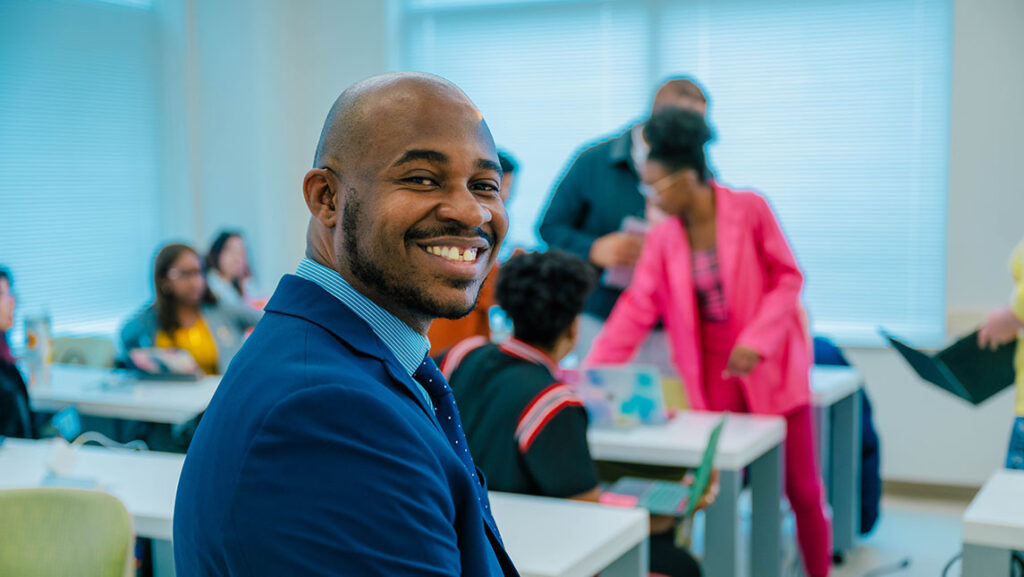From the spring 2017 UNCG Research Magazine
Erika Rauer saw the usual suspects when she poked her head into a student-led violin class at a Greensboro Boys and Girls Club — an enthusiastic teacher surrounded by six focused children. But the object of focus wasn’t a violin; it was a small, squishy ball — passed intently but swiftly to the beat of a hip-hop violin piece.
Just as the third-graders got comfortable with the beat, the UNCG music student changed the cue, giving the children a new challenge.
“It’s a simple game, but for kids, it can be hard,” says Rauer, who oversees the Arts After School initiative in her role as program director for the UNCG Community Arts Collaborative.
![[Photo by Martin Kane]](https://research.uncg.edu/wp-content/uploads/2017/06/Community_Arts_2_-1-scaled.jpg)
“We ask our student instructors to think about that rounder music experience and push them to bring other skills to the classroom,” Rauer says. “If you only get to practice a musical instrument once or twice a week, it’s unlikely you’ll be highly proficient at the end of the year.” But that’s not the goal right now.
As children master the rhythm, they also learn high-level thinking, grit, perseverance, and listening skills.
“Those are directly relatable to understanding any content, whether it’s math or literature. Music teaches kids the ability to hone their focus,” she says.
It’s a unique learning experience for the student instructors as well. According to Peter Alexander, dean of UNCG’s College of Visual and Performing Arts, 21st-century arts students will need a different kind of toolbox than that of previous generations. “Our students might not want to be just a music teacher or dance with a company,” he says. “Our recent grads may be playing in a regional professional orchestra while also teaching students or doing graphic design work for an arts council.” Young arts professionals are branching out and mixing it up. “Through this program, we hope they’ll discover how their skills might be used in any community.”
Rauer agrees, citing her own path as an example. “I performed as a soloist opera singer while teaching children’s opera in East Harlem and the Bronx,” she says. “Full-time opera jobs are few and far between.” After 12 years of freelancing and teaching, she became director of education for the New York City Opera — experience that paved the way for her current outreach work.
Classroom management proves to be one of the biggest challenges students face in their work with kids, Rauer says. “Our performance majors might be comfortable teaching one-on-one, but when they have to work with a larger group dynamic, they may not be as effective. We help develop those skills.”
Arts After School also gives UNCG students meaningful experiences in communities that may be different from those they grew up in. “Most of the children they’re teaching at the Boys and Girls Club receive free or reduced lunch. They’re from communities where our students might not otherwise go,” Rauer says. “Some of our students will realize they like this particular type of challenge and feel good about the work they’re doing. By making this connection, they may decide to incorporate some aspect of service work into their career.”
With faculty collaborators, Rauer is currently expanding Arts After School to include other disciplines, such as theater, visual arts, and dance. “I see all of these arts education classes as opportunities for kids to explore other perspectives and points of view. They’re able to work together to create a performance or an exhibition, and they see the impact you can make if you work for something together.”
Plus, Rauer adds, through the arts, children can put their ideas out there to be seen by other people.
“Our Community Arts Collaborative helps students claim a space to make their thoughts and themselves visible to the world. Through this program, we can give marginalized populations an empowering platform where their voices can be heard.”
![[Photo by Martin Kane]](https://research.uncg.edu/wp-content/uploads/2017/06/result.name-image1024x768-6.jpg)
Arts After School. Arts After School is a partnership among UNCG, the Salvation Army Boys and Girls Club of Greensboro, Greensboro Parks and Recreation, and City Arts, with funding from the United Way of Greater Greensboro Community Enrichment Venture Grant and ArtsGreensboro.
Community Arts Collaborative. With UNCG’s renowned College of Visual and Performing Arts in their own backyard, North Carolina arts enthusiasts enjoy convenient — and affordable — training and world-class performances. Many of these connections take place through the college’s Community Arts Collaborative. “Faculty, staff, students, and community partners come together to provide hands-on, experiential opportunities to local residents,” explains program director Rauer. “Efforts often address community needs, such as filling gaps left by public cuts to K-12 arts programming.” Simultaneously, UNCG arts students gain valuable teaching and service experiences. Learn more at https://vpa.uncg.edu/community-arts-collaborative.
“In Harmony” by Robin Sutton Anders originally appeared in the spring 2017 UNCG Research Magazine



